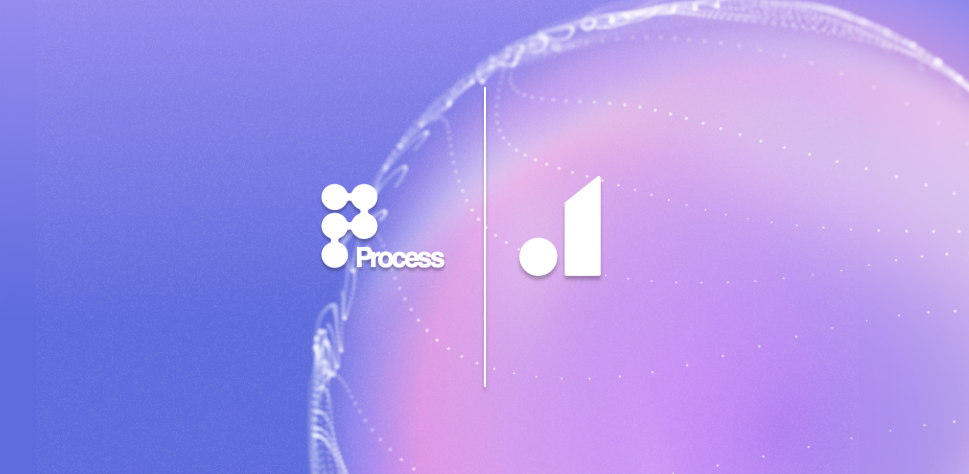
// Recruitment Technology, Recruitment Strategies
5 Essential Recruiting Metrics to Optimize Your Desk
13/11/2025
7 MIN
Recruiting can be challenging for both recruiters and hiring managers. The recruiting process is constantly evolving, and we often face unexpected changes even in the final stages of the interview process, sometimes even after a candidate accepts a job offer. It’s not uncommon for job seekers to receive multiple offers and reassess their decisions right up until their start date.
A typical recruiting process, whether for go-to-market or technical roles, usually involves 3 to 4 stages, including interviews, phone calls, and assessments, and it can take anywhere from 3 weeks to 2 months on average. Throughout this time, recruiters work hard to keep qualified candidates engaged and excited about the opportunity.
After all, maintaining enthusiasm and clear communication helps ensure a smooth process and a successful placement.
Of course, things don’t always go as planned. Hiring managers may adjust requirements midway, candidates might explore multiple opportunities simultaneously, and despite our best efforts, it’s impossible to reach every qualified person out there.
Still, our goal remains the same: to create a great experience for both candidates and hiring teams and to bring the right people together at the right time. These challenges highlight just how valuable recruiting metrics can be in guiding smarter decisions and improving hiring strategies.
What are the 5 Key Recruiting Metrics?
1. Time to Fill
Time to Fill measures the duration between the kick-off of a role, when you have all the necessary information, have created the job description, and have posted it on job boards, until the job position is successfully filled. To achieve hiring success, focus equally on candidate experience and client management.
After the screening process, contact the candidate before and after every interview throughout the recruitment process, either via LinkedIn, other social media, or via phone. Ask how they felt the interview went, their impressions of the team and company culture, and how they managed any assessments.
Don’t forget to send them encouragement and good luck messages; these small gestures make a big difference. Recruitment metrics show that consistent communication boosts engagement and reduces dropouts.
Additionally, always ask if the potential candidates are involved in any other hiring processes. This simple question can help you anticipate potential offer-stage dropouts and prevent negative surprises. When it comes to client management, support your candidates while keeping your clients informed.
Explain why moving quickly is crucial, listen to their needs, and build mutual trust through transparency and consistent communication.
2. Interview Conversion Rate
The Interview Conversion Rate compares how many candidates you submitted to how many candidates progressed to the interview stage. Some recruiters submit only a few high-quality profiles and achieve strong results, while others send a large number of candidates to increase the odds of success. This metric enables you to find the balance between the quality of hire and the right quantity.
It’s not about submitting the most candidates; it’s about presenting the right ones. The goal is to understand the client’s needs so deeply that each submission has a strong chance of advancing through the hiring process. Using recruiting metrics here allows you to measure alignment between candidate quality and client expectations.
3. Offer Conversion Rate
The Offer Conversion Rate indicates how many interviews are required for a candidate to receive an offer. Ideally, this number should be as close as possible to the total interviews conducted, which makes it one of the more challenging metrics to optimize. Success here starts with sourcing, the most critical step in recruitment.
Strong sourcing ensures that almost every interviewee is exceptional. Before launching any search, make sure the job requisition is clearly defined and approved, as a well-structured requisition sets the foundation for accurate sourcing, faster time to fill, and improved recruitment metrics.
During interviews, pay close attention to each candidate’s motivation and engagement. Understanding their “why” helps ensure that offers are accepted and that both sides are aligned. Tracking recruiting metrics like candidate drop-off or job offer acceptance rates helps you refine this alignment further.
4. Retention Rate
Retention Rate measures how many candidates that you have placed remain in their new role after the initial few months (typically 3–6 months). Keeping in touch with your top candidates after they start their new job is very important. A quick check-in can help you spot early problems, hear honest feedback, and support them as they adjust.
The first few months in a new role can be tough, and your continued presence can really help them stay engaged and happy.
5. Recruiter Productivity
Recruiter Productivity is one of the most comprehensive hiring metrics; it captures your total hiring practices, including placements, revenue, and overall recruiting activity (calls, interviews, submissions, and offers). Recruiting metrics can help visualize your progress and identify where your time delivers the most value.
A top-performing recruiter maintains a healthy balance between activity and outcomes. Productivity isn’t just about numbers; it’s about staying engaged and passionate throughout the process. Talk to top talents, share stories, ask insightful questions, and provide valuable advice to clients. Great recruiters are not just matchmakers; they’re part strategist, part coach, and sometimes, part therapist.
At the same time, recruiters often deal with many manual and repetitive tasks that can be tiring and time-consuming. This is where using a good Applicant Tracking System (ATS) becomes very helpful and reduces external recruiting costs. With Atlas AI recruitment platform, you can automate many of these routine tasks, save valuable time, reduce stress, and move faster in the hiring process.
This allows them to focus more on what truly matters: building hiring manager satisfaction and making great matches. Hiring metrics from such platforms provide real-time performance visibility.
What Affects All Recruiting Metrics?
Several factors can influence every hiring metric. Many agencies today take on roles that are already difficult for clients to fill, positions with rare skill sets, complex tech stacks, strict budgets, or long lists of requirements.
The overall working environment also plays a big part. It matters whether your team values collaboration, celebrates achievements, supports you during challenges, and provides guidance when needed. Client flexibility is another key factor. When clients are open to alternatives, for example, considering different tools, technologies, or work arrangements such as hybrid instead of fully on-site, the hiring process becomes smoother and faster.
Finally, client engagement can make or break your results. Regular communication, weekly check-ins, and timely, constructive feedback help you move candidates quickly through the pipeline and maintain strong relationships on both sides. Recruiting metrics measure these dynamics, making it easier to adjust strategies for better outcomes.
What Can You Control as a Recruiter?
I believe recruiting is an unpredictable industry, and every recruiter is doing their best to succeed. So, here’s some advice from one recruiter to another on how to achieve higher recruiting performance.
Resilience is key. You have to manage your emotions and keep going, even when things get tough, especially after investing so much time and effort into a role. Focus on what you can control: engage your potential new hires, communicate openly with your clients, and be transparent with both sides.
Make sure your client understands the candidate’s expectations and experience, and that the candidate has a clear picture of the job opening, the culture, and the salary. This honesty helps prevent dropouts, reduces cost per hire, and builds long-term trust. Recruiting metrics confirm the value of transparency by tracking engagement and satisfaction levels.
It’s also important to consult your clients or hiring managers throughout the process. Share the challenges you’re facing early on, and always maintain the mindset that “even if it’s hard, we can find the highest quality candidates.” Suggest alternatives, whether that’s being more flexible with location, working model, required technologies, or benefits to make the recruiting process more efficient and realistic.
Lastly, as I mentioned earlier, focus on both quality and quantity when presenting candidates. It’s not just about sending more profiles or only perfect ones; it’s about striking the right balance to ensure consistent results and satisfied clients. Hiring metrics bring clarity and accountability to that balance.








